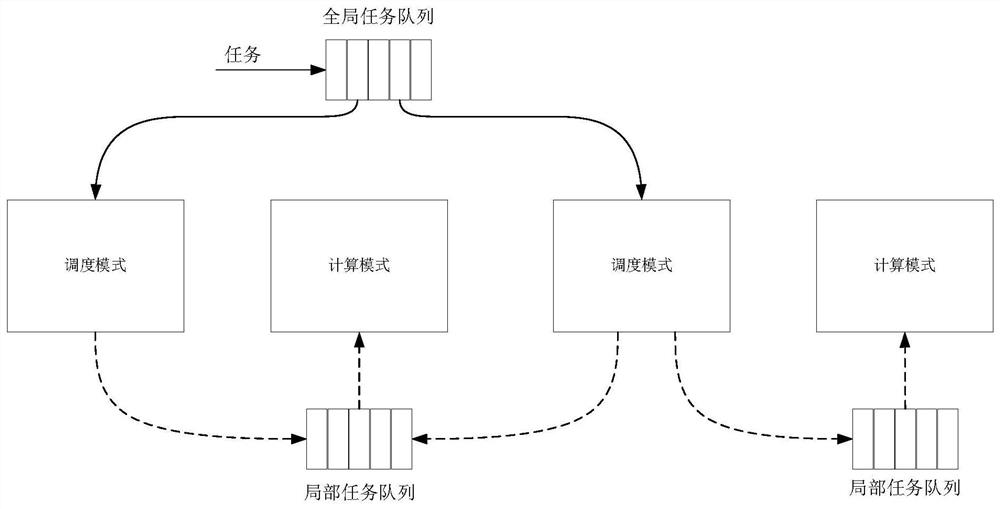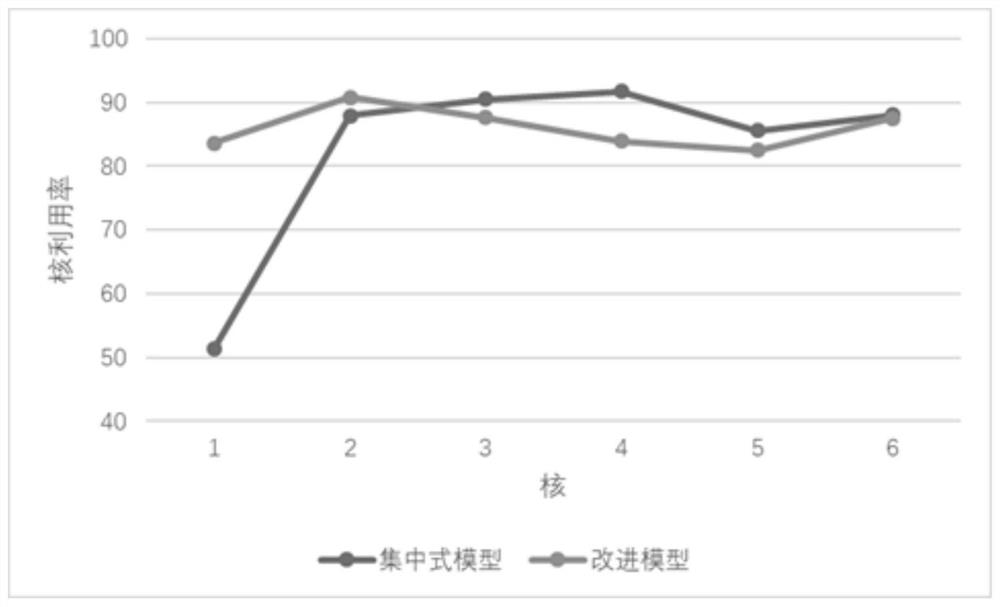A task scheduling and allocation method for multi-core processors
A multi-core processor and task scheduling technology, which is applied in the direction of electrical digital data processing, instruments, multi-programming devices, etc., can solve the problems of backlog tasks in task queues, increased spin loss, and tasks that cannot be processed, so as to improve the success rate of scheduling , the effect of reducing spin loss
- Summary
- Abstract
- Description
- Claims
- Application Information
AI Technical Summary
Problems solved by technology
Method used
Image
Examples
Embodiment Construction
[0027] The present invention will be further described below in conjunction with accompanying drawing:
[0028] figure 1 It is a task flow trend diagram of a multi-core processor-oriented task scheduling and allocation method;
[0029] figure 2 It is a comparison chart of the core utilization ratio between the present invention and the existing scheduling model;
[0030] Technical scheme of the present invention is realized like this:
[0031] 1. attached figure 1 is a task flow trend diagram of the present invention, which shows the task flow trend.
[0032] 2. When the task arrives in the task queue, the core in scheduling mode starts to receive the task
[0033] 3. After receiving the task, make a normal scheduling selection for the task and record the result.
[0034] 4. Then send the currently processed task to the task queue corresponding to the recorded core, no matter what state the core is in at this time.
[0035] 5. If the corresponding core is in the comput...
PUM
 Login to View More
Login to View More Abstract
Description
Claims
Application Information
 Login to View More
Login to View More - R&D
- Intellectual Property
- Life Sciences
- Materials
- Tech Scout
- Unparalleled Data Quality
- Higher Quality Content
- 60% Fewer Hallucinations
Browse by: Latest US Patents, China's latest patents, Technical Efficacy Thesaurus, Application Domain, Technology Topic, Popular Technical Reports.
© 2025 PatSnap. All rights reserved.Legal|Privacy policy|Modern Slavery Act Transparency Statement|Sitemap|About US| Contact US: help@patsnap.com


